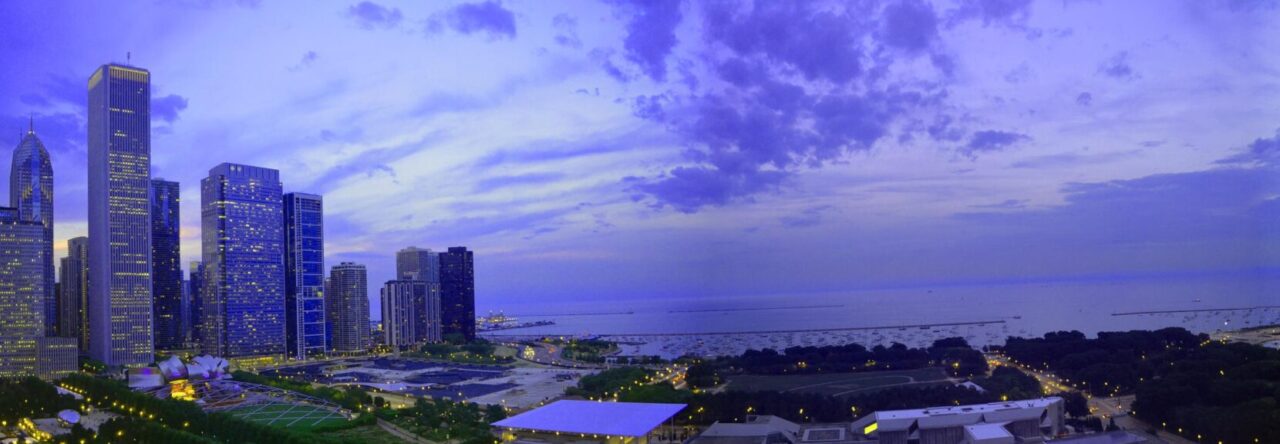I’d like to add a little more to the comments I posted on Grid Chicago regarding the speed cameras ordinance passed by the City of Chicago earlier this week.
As usual, the guys at Grid Chicago did an excellent job of reporting on the legislation and what it will (or won’t) do and I don’t intend on covering that. What I do think is important to highlight is the fact that too many streets in Chicago are built so wide as to encourage speeding. In my northwest side neighborhood of Jefferson Park, Milwaukee Avenue gets so wide north of the UP Northwest Line bridge that it is virtually impossible to travel the speed limit (30 MPH) without getting run off the road.
[mappress mapid=”1″]
This type of road cross-section is what Charles Marohn calls a “complete road.” And it is designed for the 45 MPH world that is an engineering, fiscal, and urban design failure.
This is the problem with Milwaukee Avenue and for many of the major four lane arterial streets in Chicago. They are designed for quick movement of cars. Thus, a 30 MPH speed limit, which is the speed limit in Chicago where not posted otherwise, is a joke for cars. And it is dangerous for pedestrians and bicyclists.
If we’re really concerned about safety and about reducing pedestrian, bicycle and auto injuries and fatalities in this city, speed cameras are not the answer. Better design is. This is what I would recommend:
Reduce the width of the lanes to 10′ widths, perhaps even dropping a lane. Most of Milwaukee Ave. south of the UP-NW line into downtown is two lanes. This frees up room for the bike lane. In addition, there will be room for a median with protected pedestrian crossings. According to the National Complete Streets Coalition:
Complete streets reduce crashes through comprehensive safety improvements. A Federal Highway Administration review of the effectiveness of a wide variety of measures to improve pedestrian safety found that simply painting crosswalks on wide high-speed roads does not reduce pedestrian crashes. But measures that design the street with pedestrians in mind – sidewalks, raised medians, better bus stop placement, traffic-calming measures, and treatments for disabled travelers – all improve pedestrian safety. Some features, such as medians, improve safety for all users: they enable pedestrians to cross busy roads in two stages, and reduce left-turning motorist crashes to zero, a type of crash that also endangers bicyclists.
One study found that designing for pedestrian travel by installing raised medians and redesigning intersections and sidewalks reduced pedestrian risk by 28 percent. Speed reduction has a dramatic impact on pedestrian fatalities. Eighty percent of pedestrians struck by a car going 40 mph will die; at 30 mph the likelihood of death is 40 percent. At 20 mph, the fatality rate drops to just 5 percent. Roadway design and engineering approaches commonly found in complete streets create long-lasting speed reduction. Such methods include enlarging sidewalks, installing medians, and adding bike lanes. All road users – motorists, pedestrians and bicyclists – benefit from slower speeds
Complete streets encourage safer bicycling behavior. Sidewalk bicycle riding, especially against the flow of adjacent traffic, is more dangerous than riding in the road due to unexpected conflicts at driveways and intersections. A recent review of bicyclist safety studies found that the addition of well-designed bicycle-specific infrastructure tends to reduce injury and crash risk. On-road bicycle lanes reduced these rates by about 50%.



